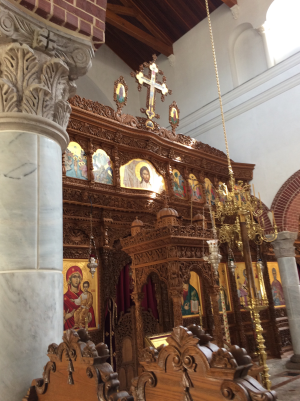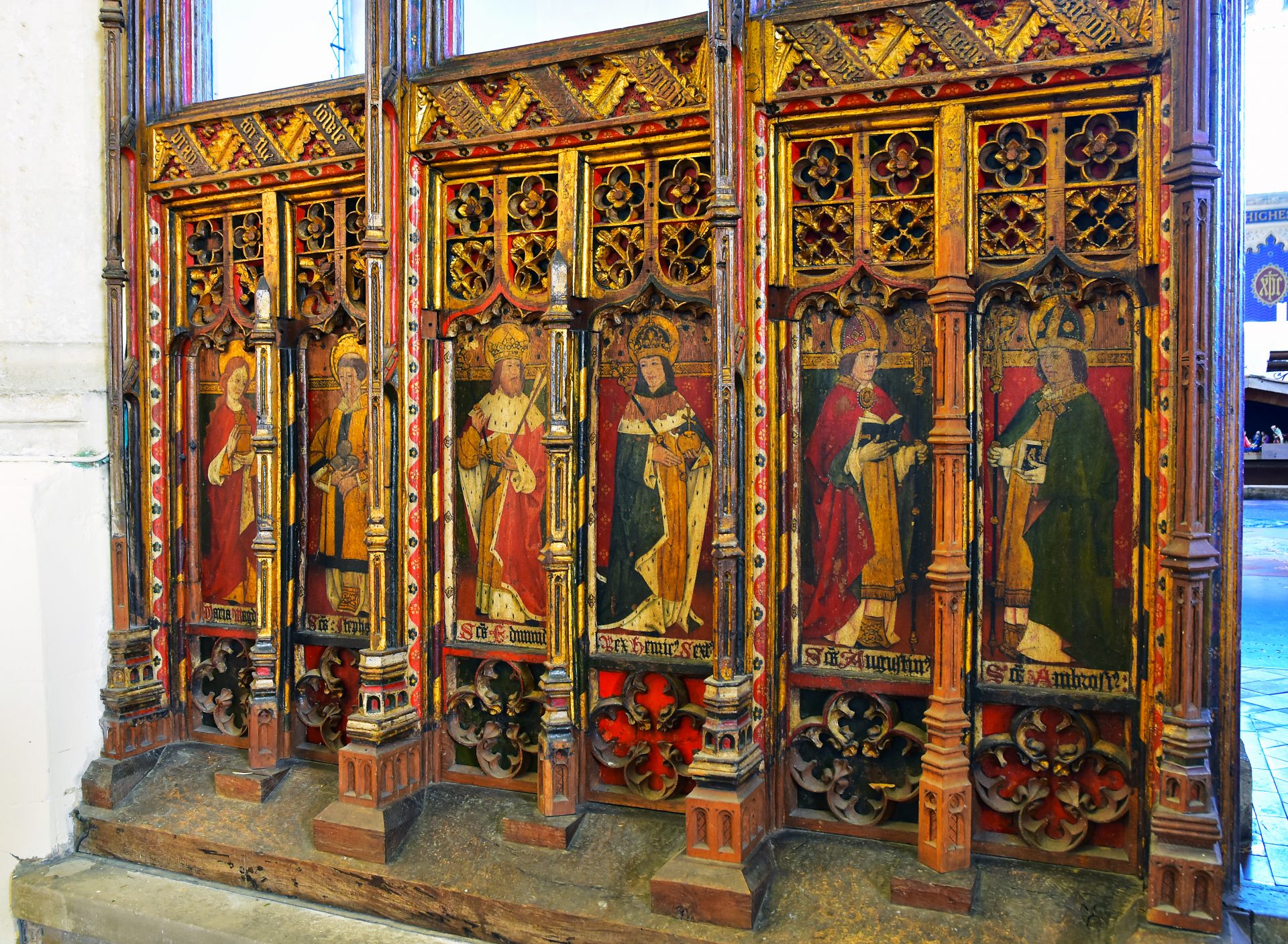Splendid. This iconostasis ticks all of the boxes I look for in a contemporary Orthodox (or Eastern Catholic*) iconostasis, which include icons traditional to our rite, Holy Doors, sometimes called Royal Doors (my understanding, and if I have been misled on ths point -let me know, that technically the term Royal Doors historically referred to the entrance to the Nave from the Narthex opposite the Holy Doors), which when closed highly obscure the view of the interior of the altar, but not completely, so that one can also tell when the curtain has been closed, since the rubrics specify at times the Holy Doors are to be closed but the curtain is to remain open. When it comes to the Deacons’ Doors, I like both the variety shown here, that when closed, seem to disappear, and also the variety that is more obvious, sometimes even featuring porthole-shaped windows as a safety precaution.
*For some reason, recent Eastern Catholic and Greek Orthodox iconostases often eliminate the liturgical curtains and sometimes even the Holy Doors, which I dislike, because I regard the closing and opening of the curtain and the Holy Doors to be an essential and dramatic part of the liturgy, something one also sees in the Oriental Orthodox liturgies (except for the Coptic, oddly enough, since their iconostases is closest to ours, but their use of the curtain is limited to opening it at the start of the service and closing it at the end, which I find unsatisfying except during what we call Bright Week, the first week after Pascha) and also in the Assyrian liturgy. For example, in the Syriac Orthodox, Armenian and East Syriac liturgical rites the curtain will inevitably be closed during the prayers of vesting and the prothesis, and also during the Fraction and sometimes the communion of the clergy, and occasionally at a few other times in the Syriac Orthodox liturgy. I regard the Eastern Orthodox rubrics concerning the opening and closing of the curtain and the doors to be extremely important.
I suspect that before the modern iconostasis appeared, when the Templon as used at Hagia Sophia was standard, the curtain wrapped around the templon allowing for the view inside of it to be obscured (except perhaps from above, but only at Hagia Sophia; also if I recall they had such a large choir and so many deacons, that they, along with the Emperor and his attendants, would have occupied all of the balcony areas that might be able to see into the Templon if its curtains were closed). This is of course hypothetical, but i am mistrustful of those who insist the early church was more liturgically open than the church of today; we know this was not the case in terms of the dismissal of catechumens, penitents, energumens and hearers, and we know they regarded keeping unauthorized persons out of the nave as something very important, since doorkeepers actually ranked above exorcists in the minor orders. i also love that in the early church exorcism was viewed as something the most junior members of Holy Orders could normally handle, as opposed to what we see in the Roman Catholic Priest at present where exorcism is handled by an elite class of priests; it suggests to me that the strength of the faith of the early church, which was like gold tested in the fire of the Diocletian persecutions and those before it, was so intense, and it also brings to mind the vision one of the Desert Fathers had while sleeping, of two monks from his day soaring above the ground effortlessly, and another monk from the future just barely remaining aloft and with great difficulty, which if I recall is in the
Arena of St. Ignatius Brianchaninov.



![reconstructed rood loft of St. Teilo's church [a rural small church] as it appeared in 16th century, Llandeilo, Carmarthenshire reconstructed rood loft of St. Teilo's church [a rural small church] as it appeared in 16th century, Llandeilo, Carmarthenshire](/proxy.php?image=https%3A%2F%2Fupload.wikimedia.org%2Fwikipedia%2Fcommons%2Fa%2Fa0%2FInside_St_Teilo%2527s_Church_at_the_National_History_Museum%252C_St_Fagans_%2528geograph_4417887%2529.jpg&hash=b28ab1a6f5356e696e495f64bb6fbb00)